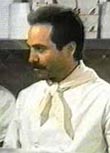|
|
This topic comprises 3 pages: 1 2 3
|
|
Author
|
Topic: Digital vs. Film Cinema
|
Frank Manrique
unregistered
|
 posted 05-30-1999 01:07 AM
posted 05-30-1999 01:07 AM

We wholeheartedly agree with Mr Redifer' evaluation of the industry's attempt to
absolutely control everything that entails film cinema, this time by begining to
introduce digital imaging technologies into the film theater arena, and gleefully
cheered his shot at the DIVX evil empire! Our questions regarding the alledged 35mm film resolution matching by
DLP-via-uncompressed digital means also parallel his comments regarding 70mm
film: if indeed they can do 35mm-like image quality, why not go ahead and do
70mm as well? The answer might be: because they can't...nor ever will. Film is
film and electronic-derived images-uncompressed or otherwise-are just that. Sure,
uncompressed digital "cinema" may look fine at first, but we won't be seeing that,
will we? No more than we get to see uncompressed D5 sources for the final
MPG-2 compressed images we then get to see in video [DVD]! It is ironic that we, in our humble attempts to educate our members, are using film
(when we can obtain it) as our ABSOLUTE reference with which to judge images
proceeding from any video medium available extant (in order to hopefully cause
the electronic industry to produce electronics that could one day close resemble
film), while there are those who are trying just the opposite! Go figure... By the way, our film setup include a Norelco AA2 35/70mm projector. We need
a manual for it. Any help here?
|
|
Brad Miller
unregistered
|
 posted 05-30-1999 01:07 AM
posted 05-30-1999 01:07 AM

I can get you a photocopy of the AA manual. Please e-mail me directly.
|
|
|
|
|
|
|
|
Manny Knowles
"What are these things and WHY are they BLUE???"

Posts: 4247
From: Bloomington, IN, USA
Registered: Feb 2002
|
 posted 01-24-2011 09:55 AM
posted 01-24-2011 09:55 AM




Face it -- We're not getting "film resolution" anyway - not even on film.
Film prints (today) are mostly struck from a 2K DI. So the 2K DCP will look better because it's an exact copy of the DI. Film is (at least) a generation away from that, and subject to mechanical artifacts of projection - which includes handling.
And, while I'm sure everyone on here strives to deliver perfect presentations, the vast majority of film presentations are flawed in one way or another. I suspect most of the "perfect" ones are probably flawed, too.
Then there's repertory to consider - if we can't get prints looking right on opening day, what do you suppose they look like a few weeks, months, years later? Don't bother arguing - you KNOW what I'm talking about.
A digital "print" will always look the same from the first day to the last -- provided the technology doesn't become obsolete.
That issue of the technology remaining stable (or at least backwards compatible) is my only real concern about D-Cinema right now. At least we can say that film has remained pretty-much consistent over time. I just showed two silent films yesterday. I changed out the lenses, aperture plates and adjusted the frame rate, but the film still fit into the projector and it still ran. I'll admit, there's something to be said for that.
That said, not all film technology has remained stable: We have seen the demise of Nitrate and certain color film stocks have let us down. Sadly, I'd have to add VistaVision, Cinerama and even 5/70 to the "obsolete" list.
Yes. Even 5/70.
Now, I know a fair number of us have a soft spot for 70mm. So, let me be clear: I'm not saying 5/70 is an inferior format. Just that it's gone.
It's true that prints have survived and it's also true that some theatres can still run them. But, then, it's also true of Nitrate. And, in the case of 5/70, the number of surviving prints is dwindling. The number of surviving prints that will portray the format in its best light is even lower than that.
Was 5/70 superior to 35mm? Yes. "Obsolete" doesn't mean "inferior."
Consider the following:
Many who have seen Nitrate support the claim that it provided a superior image over that rendered by Safety Film.
Similarly, the quality of light from carbon arc is regarded by many (who have seen it) to be superior to Xenon.
Even so...these technologies are obsolete.
And 35mm is going away, too.
I love handling film but I'm also a realist. It's (nearly) time to say goodbye. Goodbyes are sad things. It's okay to cry about it. But realize - that's what's happening here. We're saying goodbye to a loved one.
4257 days later:
...Some of us are (still) in denial...
...Some have moved on to anger...
...Some are trying to rationalize/bargain, and...
...Some have accepted the situation for what it is.
| IP: Logged
|
|
|
|
Bobby Henderson
"Ask me about Trajan."

Posts: 10973
From: Lawton, OK, USA
Registered: Apr 2001
|
 posted 01-24-2011 10:32 AM
posted 01-24-2011 10:32 AM




With film on its way out of commercial movie theaters, the production end of the process is now threatened. A growing number of movies are being shot on video instead of film, regardless of the fact many end up with ass quality imagery. But, hey! It's "digital!"
I was channel surfing a bit Saturday and saw Public Enemies playing on HBO. This movie would have looked so much better if Michael Mann had shot it on film (particularly anamorphic 35mm) rather than shoot video. A lot of this movie was shot in dark settings, areas where even the most advanced video cameras have very serious performance limitations. The end result just doesn't look very good at all. The same is true for Mann's previous couple of all-digital movies.
Black Swan was nominated for the ASC's annual feature film award. I suppose it's more important for the ASC to award cheap run and gun movie-making with 16mm and Canon DSLR cameras rather than open their eyes actually look at the image quality and judge that. If the award is more about the nuts and bolts of the movie making process rather than judging the end result then where the hell is the nuts and bolts process with this movie? There's hardly any lighting design. Significant parts of the movie were shot with available light and with DSLR gain cranked up to 1600 ISO or higher (which kills a lot of resolution). The work that did seem present with lighting was pretty harsh looking. I just don't see this as being award winning cinematography. Any amateur can crank video camera gain and shoot in available light. It's one thing to honor Black Swan for its acting performances, directing, etc. The cinematography is a completely different matter.
Roger Corman used to make movies in the run and gun manner. He'd have crew members park their cars in certain areas and use the headlights to light a scene. How come none of his movies ever won any awards for cinematography? Oh, that's right. They were shot on film instead of "digital."
![[Roll Eyes]](rolleyes.gif)
The ultimate goal for a movie production's cinematography should be acquiring the best possible, most professional looking image quality. Film still does the job best even when digital tools are used in post. Better image quality is gained through precision film scanning rather than merely capturing the scene using a video camera. Nevertheless so many people are bowled over by that "digital" buzzword and apparently have little to no ability to open their eyes and look at the image quality honestly. If they did look at the image quality honestly fewer movies would be shot on video and the electronics manufacturers would have to work harder on overcoming the limitations to video.
| IP: Logged
|
|
|
|
|
|
|
|
|
|
|
|
|
|
|
|
|
|
All times are Central (GMT -6:00)
|
This topic comprises 3 pages: 1 2 3
|
Powered by Infopop Corporation
UBB.classicTM
6.3.1.2
The Film-Tech Forums are designed for various members related to the cinema industry to express their opinions, viewpoints and testimonials on various products, services and events based upon speculation, personal knowledge and factual information through use, therefore all views represented here allow no liability upon the publishers of this web site and the owners of said views assume no liability for any ill will resulting from these postings. The posts made here are for educational as well as entertainment purposes and as such anyone viewing this portion of the website must accept these views as statements of the author of that opinion
and agrees to release the authors from any and all liability.
|

 Home
Home
 Products
Products
 Store
Store
 Forum
Forum
 Warehouse
Warehouse
 Contact Us
Contact Us




 Printer-friendly view of this topic
Printer-friendly view of this topic











![[Roll Eyes]](rolleyes.gif)

![[Mad]](mad.gif)



![[Razz]](tongue.gif)



